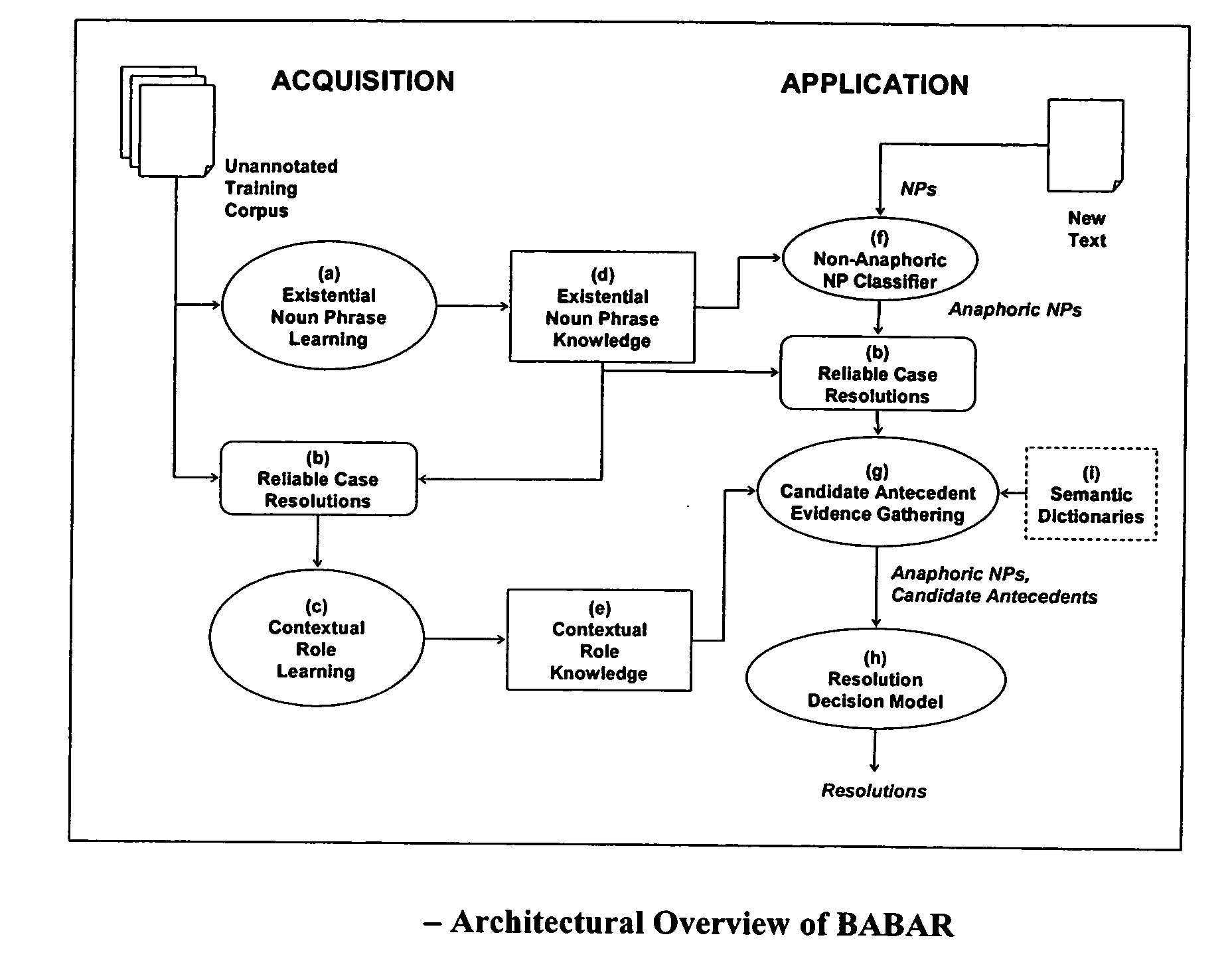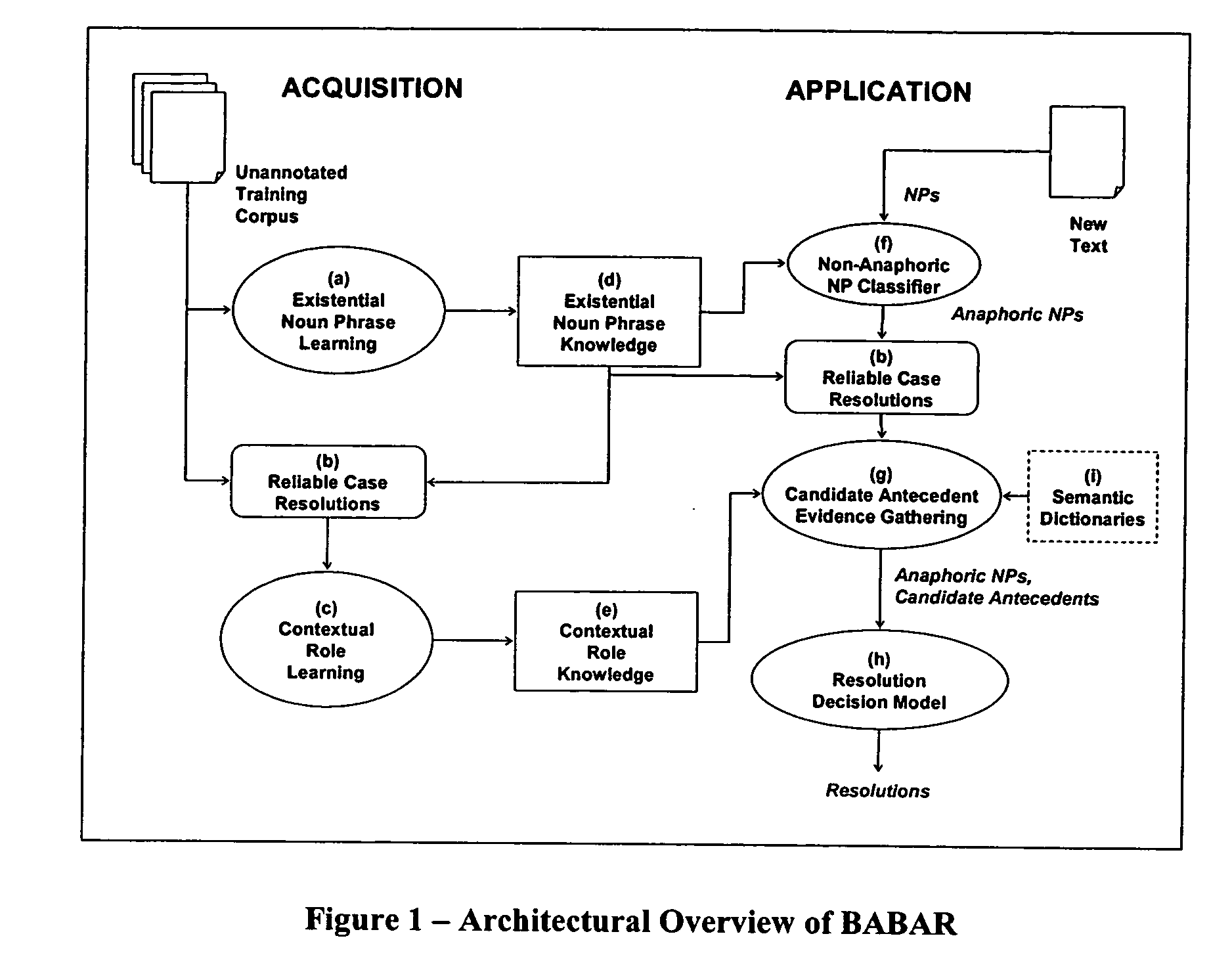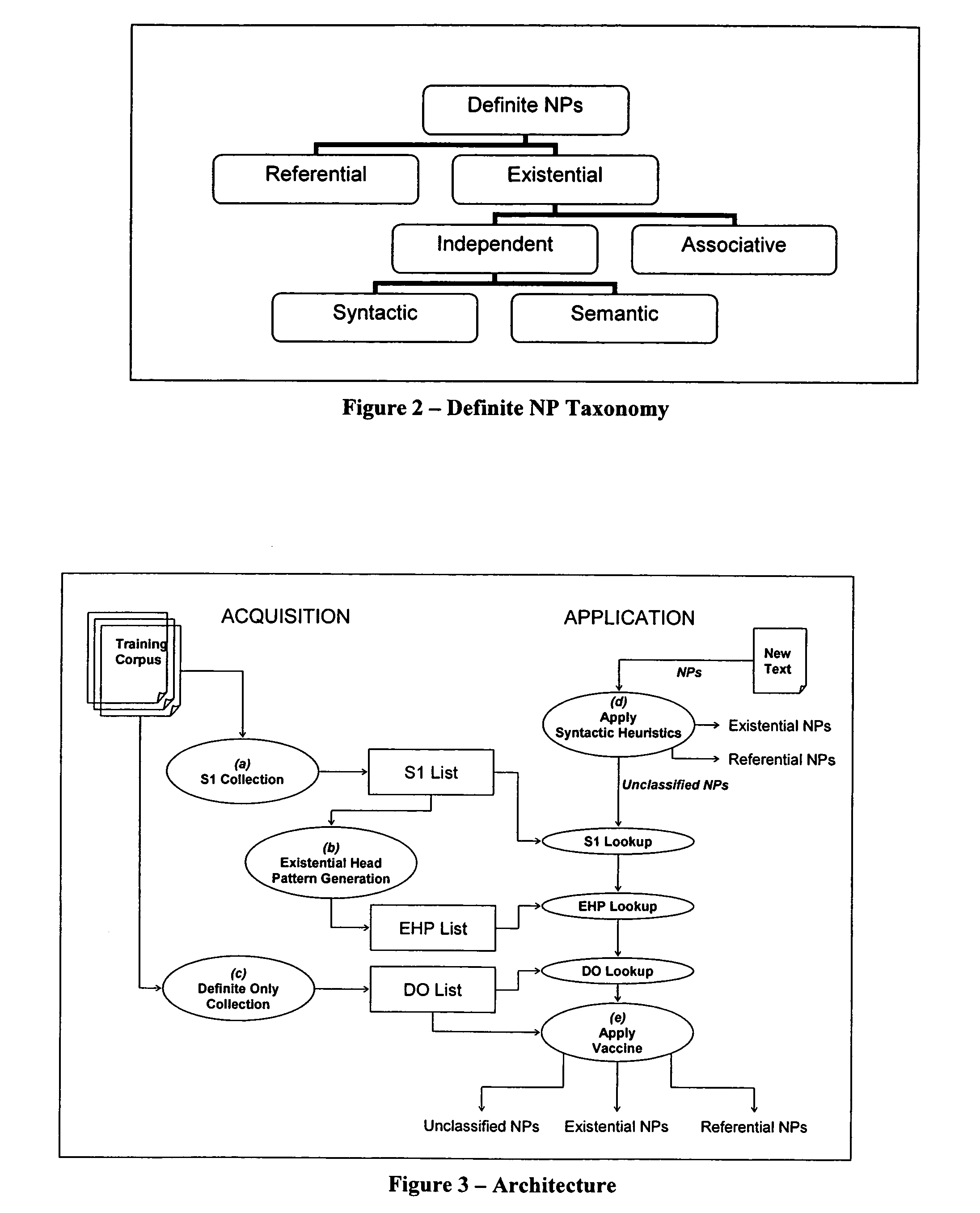Acquisition and application of contextual role knowledge for coreference resolution
a technology of contextual role knowledge and coreference resolution, applied in the field of acquisition and application of contextual role knowledge for coreference resolution, can solve the problems of coreference resolution, classification algorithm is apt to miss valuable clues, and presents a unique challeng
- Summary
- Abstract
- Description
- Claims
- Application Information
AI Technical Summary
Benefits of technology
Problems solved by technology
Method used
Image
Examples
Embodiment Construction
[0045]The previous work and problems related to coreference resolution led me to pose a set of questions. Could the texts themselves be used to automatically learn which definite noun phrases are nonanaphoric? Could the learning model identify these NPs without relying solely on syntactic constraints? And, could this acquired knowledge become part of a broad-based coreference resolution process? The answers are yes, and the initial efforts of this work produced a new model for identifying nonanaphoric NPs that supports these propositions and substantiates the first of two major research contributions made by my work.
[0046]Contribution 1: Nonanaphoric noun phrases can be automatically identified from a corpus of texts using an unsupervised learning method. Additionally, this acquired knowledge can be incorporated into the process of automated coreference resolution in general, leading to improved precision.
[0047]Given a model that addressed the issue of identifying when an NP is anap...
PUM
 Login to View More
Login to View More Abstract
Description
Claims
Application Information
 Login to View More
Login to View More - R&D
- Intellectual Property
- Life Sciences
- Materials
- Tech Scout
- Unparalleled Data Quality
- Higher Quality Content
- 60% Fewer Hallucinations
Browse by: Latest US Patents, China's latest patents, Technical Efficacy Thesaurus, Application Domain, Technology Topic, Popular Technical Reports.
© 2025 PatSnap. All rights reserved.Legal|Privacy policy|Modern Slavery Act Transparency Statement|Sitemap|About US| Contact US: help@patsnap.com



